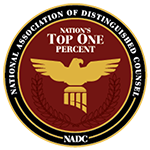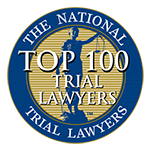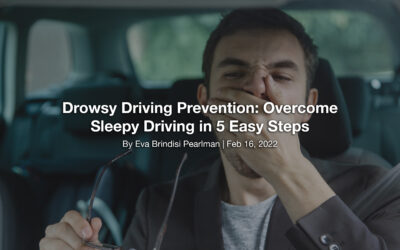For many New York State residents, driving is often one of the most dangerous activities in our daily lives. Though often overlooked, car accidents are responsible for countless preventable deaths and injuries. In 2014, there were nearly 300,000 car crashes in the state of New York alone resulting in over 160,000 injuries or deaths.
As the leaves change and the Central New York air turns crisp foreshadowing the cold winter months creeping up upon us, it reminds us that dangerous road conditions are right around the corner. Presently with the leaves falling, combined with wet roadways on rainy days, the surface of our roads in Central New York can already be slick. In the not too far future, ice and snow soon will be covering the roads, increasing the risk of slipping and sliding on roads which may lead to getting into a car accident. If you find yourself in a car accident, it is important to stay calm and ensure the safety of all individuals involved first and foremost. The second thing that comes to mind is how will you deal with the confusing world of automobile insurance. Who will pay for the repairs to your vehicle? Who will pay for your medical bills? Who will pay for your missed time from work?
In a car accident, your vehicle could face some damage from impact whether it is from another vehicle, a tree, a guard rail, etc. This could result in some outer body damage or in more severe cases, internal damage. In some cases, your vehicle may be “totaled”. No matter the damage to your vehicle, after a car accident, it is always essential to immediately contact your auto insurance company.
Insurance companies can respond to your car accident property damage claim in one of the following ways:
1. Pay for the repairs to the vehicle
If the car crash results in damage to your vehicle, which in many cases it does, your insurance company will likely inspect your car and provide an estimate of the cost of repairs. Typically, if you disagree with the estimate, or believe the insurance company failed to account for an item of damage, you may obtain your own estimate from an auto body shop to give to the insurance company. Insurance companies may negotiate the price or agree with the estimate.
2. Pay the value of a totaled car
In more severe accidents, the cost of repairs to a damaged vehicle could cost more than its worth. This is when a vehicle is considered “totaled.” If you have collision coverage for the vehicle, insurance companies often pay for the market value of your car minus your deductible. Sometimes, this is not enough to pay the remainder of an auto loan and you are forced to find a way to pay for the difference between a new car and the money given to you for a totaled car at the same time.
3. Pay for the cost of replacing the vehicle
If you have a new car, you may have purchased gap coverage that would pay for more than the market value of your vehicle if it is totaled. Insurance companies then pay the outstanding loan or the balance remaining on a leased vehicle.
4. Deny your claim partially or fully
If you do not have collision coverage on your own vehicle, you may try to make a third-party claim through the other vehicle’s insurance company. However, the third party auto insurance company may disagree that their customer was at fault for the car accident or argue they were only partially at fault. In this situation, the third party auto insurance company may deny your property damage claim entirely or only offer to pay a portion of the claim based on the percentage of fault they assign to each driver.
After a car accident and if there are injuries, the injured parties must file an NYS no-fault claim. No-fault is coverage under the automobile policy of the vehicle you occupy at the time of the accident and is designed to pay for your lost wages (up to 80%), medical bills, and other medically necessary expenses. Basic no-fault benefits can not exceed $50,000. Current NYS no-fault rules require that the insurance company receive notice of the claim with 30 days, health care bills are submitted with 45 days of the date of service and a lost wage claim is submitted with 90 days.
Sometimes, knowing which insurance company you are supposed to file your NYS no-fault claim with can be confusing. Below is a guide to help you out:
- If you are a driver or passenger in your own car and injured, you must file your no-fault claim with your own insurance company.
- If you are a passenger in someone else’s vehicle and injured, you must file your no-fault claim with the vehicle’s insurance company you were riding as a passenger in.
- If you are a pedestrian or a bicyclist that is struck by a vehicle and injured, you must file your no-fault claim with the vehicle’s insurance company that struck you.
- If you are a pedestrian or bicyclist and the victim of a hit and run driver and injured, you must file your no-fault claim with your own auto insurance company. In the event you do not own a vehicle and are eligible, you can file your no-fault (and bodily injury claim) with the New York State Motor Vehicle Accident Indemnification Corporation (“MVAIC”). MVAIC is a non-profit organization created in 1958 by the NYS Legislature to meet the needs of NYS residents without automobile insurance or who were injured in an accident caused by an uninsured or unidentified vehicle. MVAIC is funded by insurance companies that sell automobile coverage in New York State. To learn more or file a claim, go to mvaic.com or call them at (646) 205-7800.
It is always a good idea to apply for additional no-fault (personal injury protection) benefits when purchasing your automobile policy in the event you are injured in an accident to protect you if your medical bills and lost wages exceed the basic $50,000 in no-fault benefits. This additional coverage is known as Additional Personal Injury Protection (APIP) or Optional Basic Economic Loss (OBEL). You should talk to your insurance agent or an attorney to explain the benefits of this additional no-fault coverage.
We also recommend talking to your insurance agent about uninsured and underinsured motorist benefits and the cost of increasing the limits of this coverage on your automobile policy. Uninsured motorist benefits protect you if you are in an accident with an at-fault driver who doesn’t carry liability insurance (perhaps they let their policy lapse) or if you’re the victim of a hit and run accident. Underinsured motorist benefits protect you if you’re in an accident with an at-fault driver whose liability limits are too low to cover your damages, including, your pain and suffering, medical expenses, lost time from work, or impairment of future earning ability.
If you or a loved one has been injured in a car crash, you need an experienced car accident lawyer on your side to help you deal with all the confusing aspects of insurance coverage and/or litigation. The lawyers at Brindisi, Murad, Brindisi & Pearlman have many years of experience dealing with insurance companies for people that have been involved in a car accident and are the personal injury lawyer many in Central New York have chosen to represent them. Our team of lawyers is prepared to fight for you to secure the substantial compensation you deserve. Contact The People’s Lawyer for a free consultation today.
Share this blog with your friends…
Tags: Car Accidents

CONTACT US FOR A FREE CASE EVALUATION
Related Blogs
Are You Prepared For Winter Weather Driving?
ARE YOU PREPARED FOR WINTER WEATHER DRIVING? Now that winter weather is here in Central New York, snow and icy driving conditions can, unfortunately, lead to a greater number of seasonal car crashes. Severe weather can be both frightening and dangerous for motorists....
Drowsy Driving Prevention: Overcome Sleepy Driving in 5 Easy Steps
Drowsy Driving Prevention: Overcome Sleepy Driving in 5 Easy Steps It has happened to all of us at some point. We did not get enough sleep the night before, we’re trying to pull an all-nighter on a road trip, or maybe our nighttime medication didn’t wear off enough by...
What Is SUM (Supplementary Uninsured/Underinsured) Coverage – and Why is it So Important?
What Is SUM (Supplementary Uninsured/Underinsured) Coverage - and Why is it So Important? Supplemental Uninsured Motorist coverage (“UM”) is coverage that is part of an endorsement on everyone's insurance policy in the State of New York that protects occupants...
Injured In An Accident?
Contact BMBP Today!






BRINDISI, MURAD & BRINDISI PEARLMAN
UTICA OFFICE
Utica, NY 13501
OFFICE HOURS
MONDAY – FRIDAY
9AM-5PM


